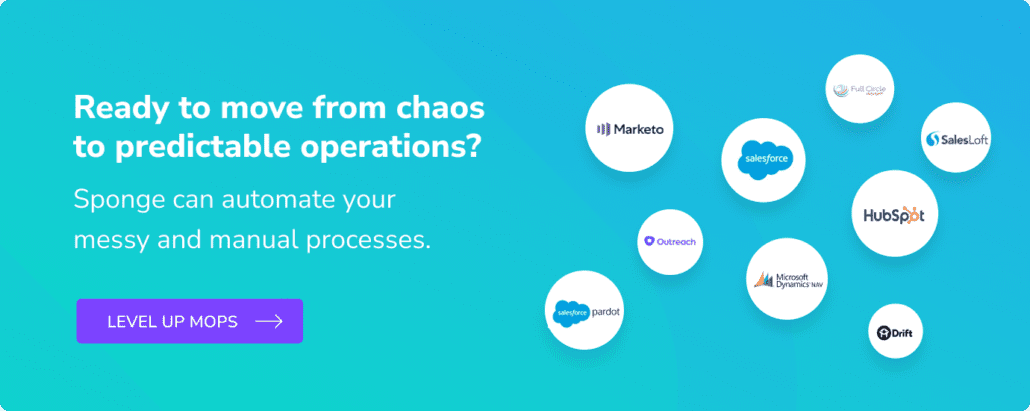Daydreaming about a new/better marketing automation platform? We love Marketo and HubSpot, but each MAP has its quirks, limitations, blockbuster features, and crappy subpar customer support.
No matter which you pick, Marketing Automation Platform implementations and migrations are tough projects: late nights, usually a marketer’s reputation on the line, training, evangelization, and years of maintenance ahead. Picking “the right one” is a fraught decision. Here are five reasons Marketing Automation Platform implementations fail.
>> Related: What a Marketing Automation Platform Actually Costs <<
In this post:
1. The platform sits idle.
You signed the contract, gulped at the number of zeros on the invoice, and then… six months later you’re barely using it. It’s not the MAP’s fault! Here’s how to use a MAP to its fullest potential:
Define user stories before requesting demos
What do you want to do with a marketing automation platform? That’s a surprisingly tough question to answer. Sit down first as a diverse team and write user stories. It will identify pain points, goals, and necessary compromises before falling in love with a glossy MAP demo. Everything looks good in a scripted demo! Go off script as soon as possible. Push your sales rep to show you exactly how to fulfill each user story.
Write a robust implementation plan
Treat a MAP implementation like you would a user conference or product launch. There should be a project plan, milestones with firm dates, sprints, and check-ins. Giving the entire project to one person with a distant launch date is a sure way to miss it.
Here’s a list of the many steps to implement a MAP.
Embrace “crawl, walk, run”
Get the lights turned on! Once your MAP is configured and functional, there’s more bandwidth to learn its features, experiment, and strategize. The alternative–debating and creating a perfect nurture campaign–can eat up months.
After the MAP is live, commit to incrementally growing more sophisticated. Tackling new things each quarter gives your team time to master new skills, understand what worked and failed, find inspiration, and not get overwhelmed.
2. No one is driving.
MAPs don’t work out of the box. In addition to creating a robust implementation plan, you need someone to actually:
- Add users
- Add tracking code to website headers/footers
- Map domain/subdomain
- Set-up lead tracking
- Set-up and configure third-party integrations: GoToWebinar, Triblio, WordPress, Sendoso, etc.
- Customize and design email landing page templates
- Set-up/integrate the blog
- Create custom fields in Salesforce
- Set-up the MAP in Salesforce
- Confirm object-level data needed in the MAP: Activities, Tasking, Contacts, Leads, Accounts (companies) and Opportunities (deals)
- and Import Leads and Contacts into the MAP
Implementation is when the risks are highest: getting blocklisted, corrupting data, or breaking something in Salesforce. But with a MAP, you’re never done building, testing, and troubleshooting. We estimate it takes 35 hours/month to maintain your MAP.
In short, if you’re buying a MAP, make sure “owning” it is part of someone’s job description.
3. You quickly outgrow it.
A marketing automation platform should be a 3-5 year investment. There are so many costs in migrating: overlapping SaaS fees, staffing up or hiring out, and allll the emotional labor that goes into vetting a new platform, battling for the budget, and distracting your team. This isn’t a short term fix or the place to skimp. Just like buying a house you can grow into, your MAP needs to suit your needs years from now.
So, before you schedule demos, consider your 3-year (gulp) marketing strategy and resources first. Is there any risk you’ll hit the ceiling of features, horsepower, or database size?
- Integrations: How will your mix of channels and tools evolve over the next 3 years?
- Reporting: What five metrics do you care about? Are they evergreen year to year?
- Workflows: What automation capabilities are important to you? Is there room to get more sophisticated over the next 3 years?
- Staffing: Can you easily hire someone to manage the system, or is the skillset rare?
- Training: There will be turnover. How easy is it to learn the new solution?
For such an important decision, sometimes the sales cycle moves fast, and marketing teams suddenly find themselves with a lot less budget and a lot more complexity.
Make sure you’re not at the whims of a CXO’s casual opinion, pressured by the board to “get something”, or wooed by an aggressive sales rep. This is an expensive mistake–user stories, an implementation plan, and finding the right staff all take time and will pay dividends.
5. It’s Eloqua.
You can do better. #throwingshade
Header image via Giphy.





